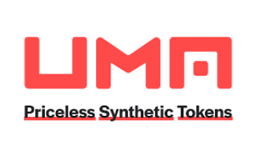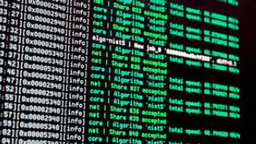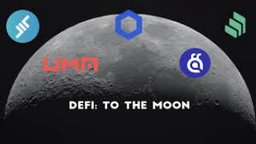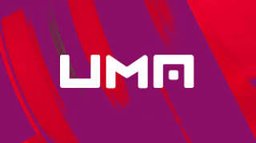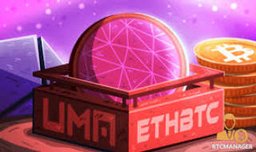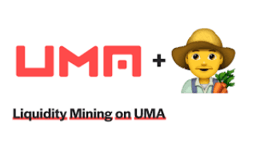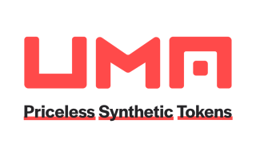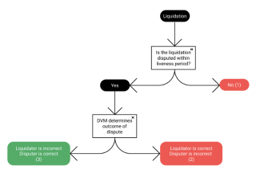UMA (Cryptocurrency)

UMA (Cryptocurrency)

Developing Standards for Universal Market Access — Featuring Allison Lu of UMA Protocol 🎙️
Universal Market Access (UMA), or lUniversal Market Access, is a cryptocurrency and protocol for the creation of synthetic assets built on Ethereum Blockchain. UMA was launched in December 2018. [5] [30]
UMA is an Infrastructure that lets users deploy and trade synthetic assets on Ethereum with minimal use of an on-chain price feed. UMA positioned itself as the “priceless” derivatives platform and relied on a system of economic incentives.[3]
In essence, UMA allows counterparties to digitize and automate any real-world financial derivatives, such as futures, contracts for differences (CFDs), or total return swaps.
It also enables the creation of self-fulfilling derivative contracts based on digital assets, like other cryptocurrencies. [4] [30]
History
UMA was founded by Allison Lu and Hart Lambur while exploring potential blockchain solutions for common problems within the financial services sector. After coming across issues with financial derivatives, Lu in an interview explained,
We realized that blockchain-based financial contracts had the capacity to help people all over the world leapfrog the existing fiat financial infrastructure in their countries and attain Universal Market Access.
UMA created its first synthetic coin around May 2020, which matched the price of Ethereum to Bitcoin. This was the company's first deployment of its priceless token model, as an effort to decrease the usage of oracles. In collaboration with Risk Labs, the firm introduced a liquidity mining pilot to the platform. Mostly as an experiment, Risk Labs will be offering liquidity rewards on specific pools during a fixed period. The firms want to test bootstrapping synth liquidity and distributing UMA's token, $UMA, to those who will take part in governance.
Tech

UMA - Building Synthetic Derivatives on Ethereum
UMA has two core components.
The first is self-enforcing financial contracts.
The second is an oracle that determines the value and margin of said financial contracts.
The system primarily focuses on being implemented into public blockchains, while simultaneously using financial derivatives, which are commonplace in the traditional financial sector.
With an emphasis and creating an open platform, the company explains,
...UMA defines an open-source protocol to create and verify trustless financial contracts—allowing anyone, anywhere, to design and build their own universally accessible financial products.
In 2020, UMA introduced synthetic tokens that allow liquidators to liquidate their positions using their own off-chain view of the reference index for the token, which informs them on whether or not the said position is properly collateralized.
Previously, synthetic token designs required smart contract technologies to determine the value of the collateral placed on a position, which was reported by a price feed on the chain.
This system of incentives functions to minimize oracle usage while keeping the entire system correctly collateralized.
The firm's new "Priceless" synthetic tokens do not require on-chain price feeds.
They opted instead for a mechanism that allows any liquidator to liquidate an uncollateralized position.
Liquidators who maintain transparency receive rewards for invalid liquidations.
Oracles come into play in this process when liquidation is disputed, as they are used to verify a price.
If the price given by the oracle proves that the disputer's price was accurate, the disputer receives a reward that the liquidator has to pay for.
On the opposite end, if a disputer is incorrect, the disputer is required to forfeit a bond to the liquidator.
Team & Investors
UMA was founded by Allison Lu and Hart Lambur. The team is diverse with employees hailing from many different countries. Their investors include Placeholder, Bain Capital, Blockchain Capital, Two Sigma Ventures, Box Group, Coinbase Ventures, Dragonfly Capital Partners, and FinTech Collective.
UMA Token
UMA tokens enable the holder to participate in community governance and resolve contract disputes through the DVM.
The UMA project token powers the system in two ways: [3]
Governance: UMA token holders govern what types of contracts can access the system, which asset types are supported, and key system parameters and upgrades.
Price requests: the priceless methodology minimizes on-chain price requests but doesn’t eliminate them — when contract interactions are disputed, UMA token holders fulfill price requests via the Data Verification Mechanism or DVM.
UMA Circulation
The total supply of UMA is a little over 100 million tokens, of which about 55 million are in circulation as of October 2020.
From the total supply, 2 million tokens were sold during the project’s Initial Coin Offering (ICO), 48.5 million were reserved for the founders of the project, 35 million were put aside as rewards for the developers of the protocol, and 14.5 million designated for future sales. [30]
In order to incentivize voter participation, every time a voting process takes place on the network, an inflationary reward equal to 0.05% of the current UMA supply is distributed among active voters proportionate to their current stake.
UMA x YAM Collaboration
YAM owns uGAS
The start of the partnership involves uLABS passing over the ownership of uGAS to the YAM Finance team.
YAM will manage uGAS and enhance the user experience by achieving the following goals by December 21st: build a new user interface for creating, redeeming, and managing uGAS positions, develop and promote the uGAS brand, launch and manage a strip of uGAS contracts which will first include uGAS-FEB21 and uGAS-MAR21, and independently-run liquidation and dispute bots to ensure uGAS is safely collateralized.[32]
Developer Mining
Starting with the uGAS-FEB21 token, all developer mining rewards earned from uGAS tokens are to be transferred to and managed by the YAM community.
For the first 3 months of this partnership, UMA and YAM have decided the YAM treasury will keep 10% of these rewards as a management fee.
The remaining 90% will be distributed to the community with 40% of the rewards given to dApp mining and 50% allocated to liquidity mining.
The YAM community has the freedom to modify this split as needed.
It is expected that the YAM treasury will hold their UMA tokens and establish a position within UMA’s governance, as traditionally this has been done with other governance tokens they have mined.[32]
Once uGAS-FEB21 is launched, developer mining rewards allocated to uGAS-JAN21 will be divided the same way.
The team anticipates extending the end date of the current liquidity mining program from December 17th to December 2st.
However, after this date, liquidity mining rewards will be lower and both uGAS-JAN21 and uGAS-FEB21 will provide the same economics in terms of rewards to liquidity providers.[32]
dApp Mining
Token minting transactions will be tagged at the point of creation allowing UMA to track which user interface was utilized.
With this information, UMA can reward developers for their work on creating front-end applications.
The UMA team anticipates almost all the dApp mining rewards for uGAS to go to the YAM treasury at the start of the program given YAM will be creating the first user interface.[32]


